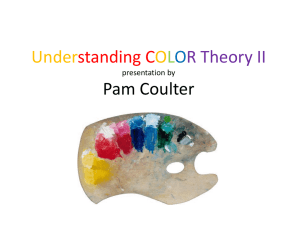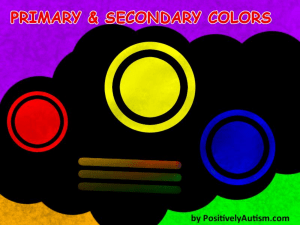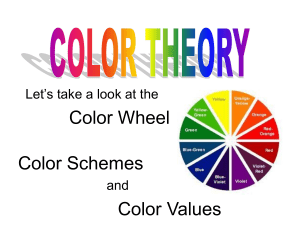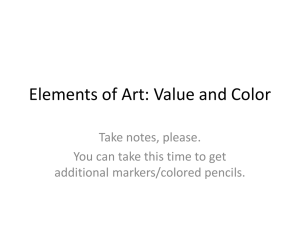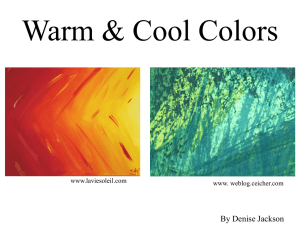Color Schemes
advertisement
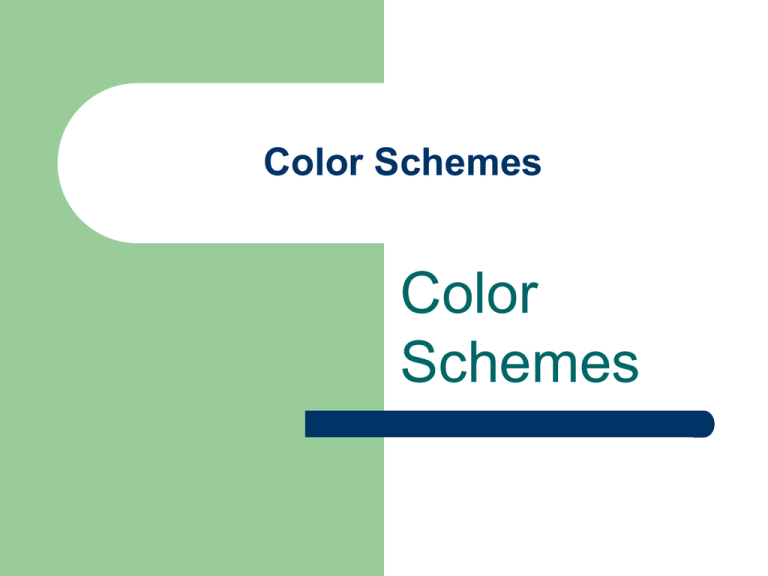
Color Schemes Color Schemes Monochromatic “Mono” means “one” “Chroma” means “color” Monochromatic color schemes have only ONE color and its values. The painting is an example of a monochromatic color scheme using tints and shades of blue Monochromatic This room displays the use of yellows Monochromatic This room displays the use of blues. Analogous The analogous color scheme is 3-5 colors adjacent to each other on the color wheel. This combination of colors provides very little contrast. This picture shows the use of yellow, yellowgreen, green, and bluegreen. Analogous Bottom picture shows use of yellows and greens. Above picture shows use of reds and oranges. Analogous This picture shows the use of purples and blues. This picture shows the use of oranges and yellows. Complementary Complementary colors are opposite on the color wheel provided a high contrast. This painting is an example of complementary colors and their values using blues and oranges. Complementary Colors opposite on the color wheel- red/green, yellow/purple. blue/orange Triadic: Red, yellow, blue Purple, orange, green The primary colors are not mixed from other elements and they generate all other colors. The secondary colors are mixed from the primary colors. Triadic Three color scheme – red, yellow, blue or orange, green and purple Warm Colors Warm colors are found on the right side of the color wheel. They are colors found in fire and the sun. Warm colors make objects look closer in a painting or drawing. This painting displays the use of warm colors such as reds, oranges, and yellows. Warm Colors Cool Colors Cool colors are found on the left side of the color wheel. They are the colors found in snow and ice. The colors tend to recede in a composition. This painting displays a cool color scheme using greens, purples, and blues. Cool Colors Other possibilities Split Complementaryred, green and blue or orange purple and green

